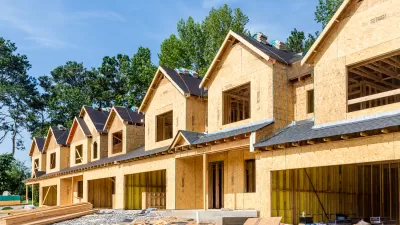As the permafrost melts, villagers in small Alaskan towns are forced to abandon their homes, which are sinking and eroding before their eyes.
"The earth beneath much of Alaska is not what it used to be. The permanently frozen subsoil, known as permafrost, upon which Newtok and so many other Native Alaskan villages rest, is melting, yielding to warming air temperatures and a warming ocean. Sea ice that would normally protect coastal villages is forming later in the year, allowing fall storms to pound away at the shoreline."
"Erosion has made Newtok an island, caught between the ever widening Ninglick River and a slough to the north. The village is below sea level, and sinking. Boardwalks squish into the spring muck. Human waste, collected in 'honey buckets' that many residents use for toilets, is often dumped within eyeshot in a village where no point is more than a five-minute walk from any other. The ragged wooden houses have to be adjusted regularly to level them on the shifting soil."
"Some villages plan to hunker down behind sea walls built or planned by the Army Corps of Engineers, at least for now. Others, like Newtok, have no choice but to abandon their patch of tundra. The corps has estimated that to move Newtok could cost $130 million because of its remoteness, climate and topography. That comes to almost $413,000 for each of the 315 residents."
FULL STORY: Victim of Climate Change, a Town Seeks a Lifeline

Pennsylvania Mall Conversion Bill Passes House
If passed, the bill would promote the adaptive reuse of defunct commercial buildings.

Planning for Accessibility: Proximity is More Important than Mobility
Accessibility-based planning minimizes the distance that people must travel to reach desired services and activities. Measured this way, increased density can provide more total benefits than increased speeds.

Fair Housing Cannot Take a Back Seat to ‘Build, Baby, Build’
If we overlook fair housing principles in the plan to build US housing back better, we risk ending up right back where we started.

LA Metro Board Approves New 710 Freeway Plan
The newest plan for the 710 corridor claims it will not displace any residents.

Austin’s Proposed EV Charging Rules Regulate Station Locations, Size
City planners say the new rules would ensure an efficient distribution of charging infrastructure across the city and prevent an overconcentration in residential areas.

Making California State Parks More Climate-Resilient
A recently released report offers recommendations for keeping state parks healthy and robust, including acquiring additional land for conservation and recreation.
City of Costa Mesa
Licking County
Barrett Planning Group LLC
HUD's Office of Policy Development and Research
Mpact Transit + Community
HUD's Office of Policy Development and Research
Tufts University, Department of Urban and Environmental Policy & Planning
City of Universal City TX
ULI Northwest Arkansas
Urban Design for Planners 1: Software Tools
This six-course series explores essential urban design concepts using open source software and equips planners with the tools they need to participate fully in the urban design process.
Planning for Universal Design
Learn the tools for implementing Universal Design in planning regulations.























